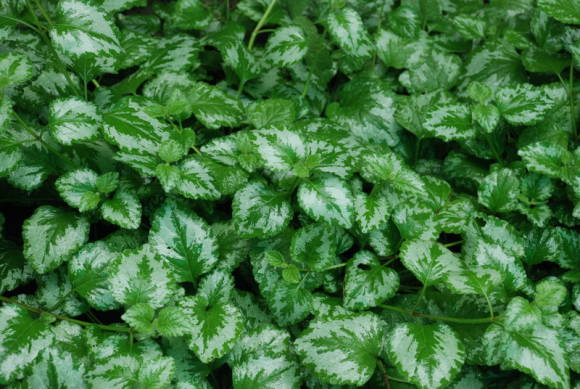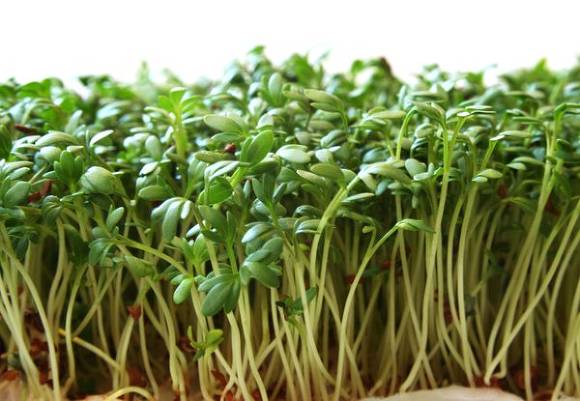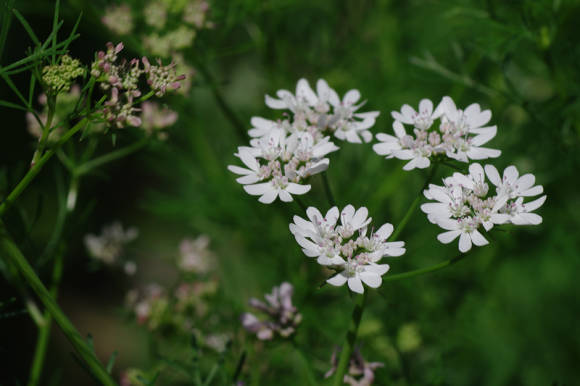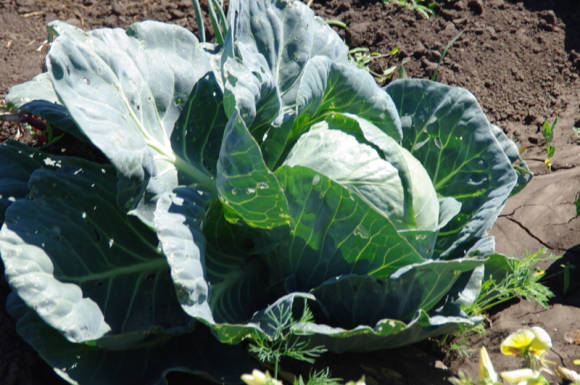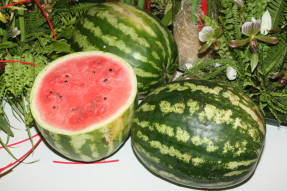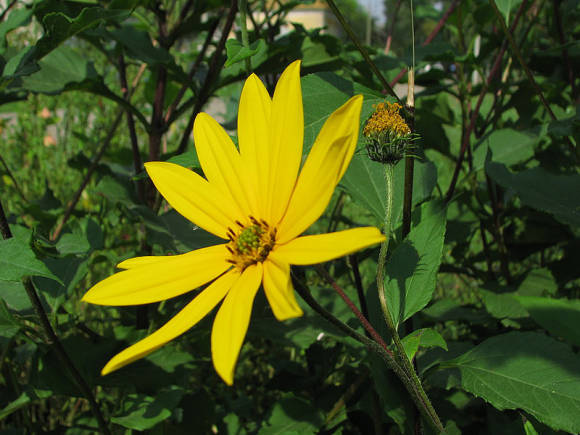Cuff(Alchemilla) - a fairly large genus of herbaceous plants (300-400 species), distributed around the globe mainly in the temperate and subarctic regions of Europe, in Asia, with the exception of a few species that are found in the mountainous regions of East Africa and South America.
The genus received the Latin name Alchemilla from the Arabic Alkemelych (alchemy). "Magic" dew drops, which are collected in transparent beads on the surface of the pubescent leaves of the cuff, without wetting them, were used by alchemists as an ideal water for obtaining gold. It was also considered holy water, which can cleanse from any disease. Meanwhile, the cuff itself is gold for garden design.
 |
In the Middle Ages, the plant bore another Latin name - Leontopodium (Lion's paws), which indicated the spread root leaves resembling the legs of a predator. There is also an analogue in French - Pied-de-lion. Now this name refers to edelweiss (Leontopodium).
In Germany, from the 16th century botanist Jerome Bock, the cuff was called Frauenmantle (Ladies' mantle) – the lobes of the cuff leaves resemble the scalloped edges of the mantle. It was even believed that it was the mantle of the Virgin Mary.
Concerning the origin of the Russian-language name of the plant - cuff - opinions differ. Some believe that it praises the lush lace of golden inflorescences towering over the foliage. Others - indicating leaves that resemble shuttlecocks.
In general, the cuffs are very similar to each other, when determining the species, one has to take into account not only the structure, shade, pubescence of leaves, their folding, waviness, but also the smallest features of the structure of sepals, the size and color of flowers, the presence of color and pubescence of stems and leaf petioles. And at first glance, all the cuffs are similar. Of those that can be found on sale, perhaps, it is easy to distinguish only the alpine cuff by the leaves deeply dissected into lobes. The rest are very similar to our ordinary cuff.
Ordinary cuff (Alchemilla vulgaris) - a wild plant in central Russia and Siberia, a ubiquitous weed. Also distributed throughout Europe.
A plant with a shortened rhizome and rising stems from 10 to 50 cm in height. The leaves are rather large, with 9-11 wide toothed lobes. The lower leaves are petiolate, collected in a basal rosette, stem sessile, alternate. The flowers are yellowish green, with short stalks. It blooms for a very long time, from late May to September.
 |
In Western Siberia and Central Asia (Tien Shan, Pamir-Altai), in subalpine and alpine meadows, another species is found - Siberian cuff (Alchemilla sibirica) - stocky meadow plant 7-30 cm high with a thick root. Basal leaves are grayish-green, rounded-reniform, with 7-8 lobes, hairy on both sides, especially below along the veins. Stems with protruding hairs, not higher than the leaf stalks, bear loose glomeruli of yellowish-greenish flowers that adorn the plant in mid-summer.
In the meadows and mountain slopes of Western Europe and Greenland will grow alpine cuff (Alchemilla alpina syn. A. glomerata). This is a low, up to 15 cm, plant, with a rosette of leaves on long petioles. The foliage is more graceful, deeply dissected into 5-7 lanceolate lobes, a bit like the leaves of Potentilla. The leaves are dark green above, silvery below due to silky pubescence. Forms dense low mats, covered from June to August with abundant yellowish flowers in large panicles. One of the most common cuffs in European gardens due to its unpretentiousness and stability.
Only a soft cuff can compete with the previous type in popularity (Alchemilla mollis) originally from Eastern Europe and Western Asia, which has won a place in flower gardens around the world. It is taller, up to 45-50 cm. The leaves are rounded, divided into 9-11 concave, toothed lobes along the edge, light green, pubescent. The flowers are quite bright, greenish-yellow, large in comparison with many other species, with a diameter of 0.3 cm. It is not for nothing that this species has a synonym - large-flowered cuff (Alchemilla grandiflora)... Inflorescences - lush large panicles, rise above the foliage. Bloom - from June to August.
 |
 |
It has variegated and large-leaved forms.
- Robusta - a more powerful and fast-growing variety, 50 cm tall, with bluish-green dense foliage and numerous peduncles.
- Senior - with gray-green foliage and abundant flowering, up to 30.5 cm tall.
- Thriller - dense plant up to 45 cm tall, with abundant flowering. Grown in commercial floriculture from seed for sale in pots.
Red cuff, or red-footed(Alchemilla erythropoda) originally from Eastern Europe. Outwardly similar to a soft cuff. It is distinguished by its smaller size, smaller foliage and, most importantly, by the reddish base of the stems. 15-30 cm high, leaves are rounded, with 9-11 concave lobes, finely toothed along the edge, pubescent, collected in a basal rosette on long pubescent petioles. The inflorescences are large.
 |
Cuff yellow-green(Alchemilla xanthochlora) - in nature, it is distributed almost throughout Europe in shrub thickets, on wet meadows, on slopes and in the mountains up to heights of 2500-2800 m.The species is high, 45-60 (90) cm in height and the same width, with thick reddish stems, sparsely hairy at the bottom. Leaves 5-9-lobed, from 5 to 20 cm in diameter, wavy, thin, dentate along the edge, without pubescence along the denticles. The lower leaves are light green, stem leaves are bluish-green, glabrous above, pubescent below, with stipules. Stems are erect, 1.5-2 times longer than petioles, bear rather dense inflorescences, 6-15 cm long, flowers are yellow-green or yellow, relatively large, 1.5-4 mm. Bloom - from June to September.
 |
 |
Silky cuff (Alchemilla sericata) - with gray-green deeply toothed soft pubescent leaves and yellow flowers. Blooms from mid-June to August.
- Gold strike - variety up to 35 cm in height and up to 60 cm in width, with velvety gray-green toothed leaves and panicles of bright greenish-yellow flowers.
Faroese cuff(Alchemilla faeroensis) - originally from Iceland and the Faroe Islands, therefore the Icelandic cuff is commonly called. 35-40 cm high, the leaves are simple, reniform in outline, deeply incised into 7-9 rounded lobes, finely toothed along the edge and whitish-pubescent with short hairs, bluish-green, silvery below, velvety to the touch. The flowers are small, yellow-green. Blooms from June to autumn.
There is a charming compact variety Alchemilla faeroensis var. pumila - 10 cm high and 25 cm wide.
 |
Reproduction
Breeding cuffs is easy. The main method is division, which can be done throughout the season. Cuttings are also successfully carried out until mid-July - the cuttings are rooted in a loose substrate with shading.
Many species reproduce easily by self-seeding. But if it is necessary to sow seeds on purpose, then you need to know that they need long-term cold stratification. Faded inflorescences are cut off at the time of darkening and ripened on the stems until fully ripe. For spring sowing, the seeds are placed in a light, moist substrate with a high sand content and placed in the refrigerator for the winter. Germinated in April-March.
However, it is easier to sow seeds in crates in November and keep them outdoors away from direct sunlight throughout the winter. In the spring, in mid-March, the boxes are brought into a room with a temperature of + 20 + 22 ° C.
Seedlings usually appear in 1-2 weeks. After the formation of the first true leaves, the temperature is reduced to + 18 ° C, and when the seedlings grow a little - to + 15 ° C. In late May - early June, seedlings are planted in open ground.
Growing
Cuffs grow on soils from acidic to slightly alkaline (pH 5.6-7.8). But for good development, the soil must be loose and fertile enough. Plants do not tolerate drought well (first of all, the edges of the leaves dry out), so they need watering in the heat. If it is not possible to water on time, then it is better to choose not a sunny, but a semi-shady place for the plant. Perfectly decorate the cuffs and the shore of the reservoir, falling in inflorescences over the water.
 |  |
All of the above species are suitable for growing in central Russia in terms of winter hardiness, but imported ones should be mulched for the winter with low peat or dry litter of large-leaved trees (linden, maple, oak) for prevention.
Like the common cuff, which grows wherever it finds loose soil, other species can also become aggressors in your area. Therefore, inflorescences that you do not plan to collect for seeds are cut off as they bloom. Timely cutting stimulates a new wave of flowering in late summer - early autumn.
Cut yellow-green airy inflorescences of the cuff look great not only in the flower garden, but also in the bouquet. They are very reminiscent of the beloved bupler room of florists and can successfully replace it. The cuff is also suitable for dried flowers - bouquets of inflorescences are dried upside down in a cool, shaded, well-ventilated place - under a canopy or in the attic. In the Middle Ages, the cuff was considered to attract love, and the bouquet of the cuff brought to the house was able to enhance the female influence in the family.
Usage
In European gardens, the cuff has been popular for more than one century, but in our country it has recently begun to be used in garden design. Meanwhile, this plant will perfectly cope with the role of both solo and filling. Due to the modest greenish-yellow color of the inflorescences, it is in harmony with flowers of almost any shade - with hosts, heucheras, astilbe, Veronica, Nivyanik, etc. In recent years, it has been recommended for urban landscaping, implying the use of perennials. Growing well and quickly, the cuff can become one of the key plants of a sunny yellow flower garden together with rudbeckia, coreopsis, and cereals.
 |  |
By the way, although the cuff is valued mainly for airy and long flowering, it is good without inflorescences. Its palmate leaves will be a counterpoint to many other leaf-shaped plants.
Mountain species - Altai and Siberian cuffs - are excellent contenders for a rocky garden, although other species are quite acceptable in combination with a stone, if they are provided with proper conditions (land, watering). Little inferior to European species and common cuff, and can be used with caution in rocky gardens. The cuff stretched out on the retaining wall looks charming, it can grow (albeit not so well) in the crevices of stones, old steps.
 |  |
The cuffs make excellent curbs, edging for the tracks. They are desirable where you need to smooth out clear geometric lines with spreading plants. For this, first of all, the species with the longest flowering period are suitable - the cuffs are soft, red-peted, Faroese, silky, yellow-green.
 |
Finally, all species are excellent ground cover plants that thrive in the partial shade of trees and shrubs, and not just outdoors. A naturgarden garden can hardly do without these plants.
 |  |
 |
The cuff is suitable for winter and early spring forcing. It is driven out at a temperature of + 12 + 18 degrees.
As a valuable medicinal plant, the cuff must be present in a pharmaceutical or ornamental garden. Young leaves of the plant can be used in salads and many more dishes and teas can be prepared from them, especially useful for diabetics (see Common cuff: medicinal and useful properties)
Cuffed Recipes:
- Cuff salad with radish and cabbage
- Minsk-style fridge with cuff, sorrel and beetroot
- Stew with cuff and carrots
- Semolina cutlets with ordinary cuff
- Mustard salad with common sorrel
- Ordinary cuff salad with horseradish
As you can see, this plant is truly versatile!

